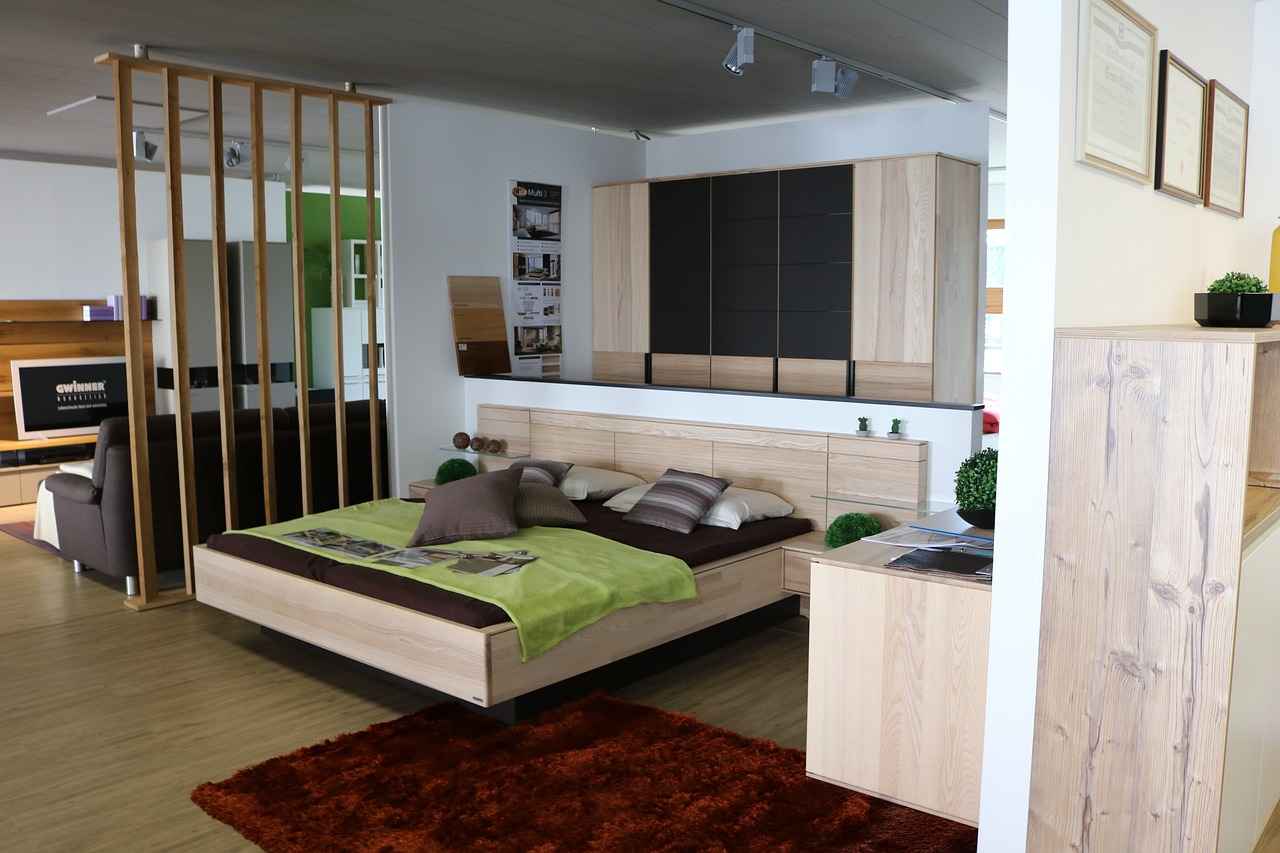This article provides a comprehensive guide on installing a ceiling-mounted room divider, covering essential tools, materials, and step-by-step instructions to help you achieve a professional finish in your space.
Ceiling-mounted room dividers are versatile solutions for creating separate spaces in a room. These dividers can enhance privacy, improve functionality, and add aesthetic appeal to various environments, making them ideal for homes, offices, and event spaces.
Opting for a ceiling-mounted room divider offers numerous benefits, including:
- Flexibility in space management.
- Ease of installation compared to traditional walls.
- The ability to customize designs to fit your decor and needs.
Before starting your installation project, gather necessary tools such as:
- Drill: For creating holes in the ceiling.
- Level: To ensure everything is straight.
- Measuring tape: For accurate measurements.
- Stud finder: To locate ceiling studs.
Each tool plays a crucial role in ensuring a successful setup.
Selecting the right materials is vital for durability and aesthetics. Common materials include:
- Curtain panels: Available in various fabrics and colors.
- Mounting hardware: Essential for securing the divider.
- Tracks: To allow smooth movement of the panels.
These can be customized based on your design preferences.
Accurate measurements are key to a successful installation. To ensure the divider fits perfectly, measure the height and width of your space. Use the measuring tape to:
- Determine the height from the ceiling to the floor.
- Measure the width where you plan to install the divider.
Proper preparation of the ceiling is essential for a secure installation. This involves:
- Locating ceiling studs using the stud finder.
- Determining the best mounting points for your divider.
Ensure that the mounting points are evenly spaced and aligned for optimal support.
Follow this detailed step-by-step guide to install your ceiling-mounted room divider:
1. Install the mounting hardware securely to the ceiling.2. Ensure the hardware is aligned with the level.3. Hang the divider panels according to the manufacturer's instructions.4. Adjust the panels for even spacing and alignment.
Identifying common pitfalls can save you time and frustration. Here are some frequent mistakes during installation:
- Not measuring accurately, leading to poor fit.
- Failing to locate studs, resulting in an unstable installation.
- Over-tightening screws, which can damage the hardware.
Regular maintenance ensures longevity and functionality. Learn how to care for your divider by:
- Cleaning the panels regularly to prevent dust buildup.
- Inspecting the hardware for wear and tear.
Explore innovative design ideas for your ceiling-mounted room divider. Consider:
- Using different fabric choices to match your decor.
- Incorporating color schemes that enhance your space.
These creative touches can transform your room into a stylish and functional area.

What Are Ceiling-Mounted Room Dividers?
Ceiling-mounted room dividers are innovative solutions designed to create distinct areas within a single space. These dividers are not only functional but also serve to enhance the overall ambiance of a room. By utilizing the ceiling as a mounting point, these dividers offer a seamless way to separate spaces without the need for bulky furniture or permanent walls.
In various environments, from residential homes to commercial offices, ceiling-mounted dividers provide a flexible approach to space management. They can be used to create private work areas, cozy reading nooks, or even temporary event spaces. The versatility of these dividers allows for easy reconfiguration as needs change, making them an ideal choice for dynamic living and working environments.
Choosing a ceiling-mounted room divider comes with a multitude of advantages:
- Enhanced Privacy: These dividers can effectively block sightlines, creating intimate spaces where individuals can focus or relax without distractions.
- Improved Functionality: By dividing a room, you can maximize the use of available space, allowing for multiple activities to occur simultaneously.
- Aesthetic Appeal: Available in various materials and designs, ceiling-mounted dividers can complement your decor, adding a stylish touch to your interior.
- Easy Installation: Many ceiling-mounted dividers are designed for simple DIY installation, requiring minimal tools and expertise.
The mechanism of ceiling-mounted room dividers typically involves a track system that is securely attached to the ceiling. The divider panels, which can be made of fabric, wood, or other materials, slide along this track, allowing you to open or close off spaces as needed. This flexibility is particularly beneficial in multifunctional areas where the layout may need to change frequently.
When selecting materials for your ceiling-mounted room divider, consider the following options:
- Fabric: Lightweight and available in myriad colors and patterns, fabric dividers are perfect for creating a soft, inviting atmosphere.
- Wood: Offering a more structured look, wooden dividers can add warmth and elegance to a space.
- Glass: For a modern touch, glass dividers maintain an open feel while providing separation.
When deciding on a ceiling-mounted room divider, consider your room’s overall aesthetic and functionality needs. Think about:
- Color Schemes: Choose colors that harmonize with your existing decor.
- Patterns: Consider whether you want a bold statement piece or a subtle backdrop.
- Size: Ensure the divider is proportionate to the space and does not overwhelm the room.
Ceiling-mounted dividers can be creatively employed in various settings:
- Office Spaces: Create individual workstations to enhance productivity.
- Living Areas: Separate play areas for children from adult spaces.
- Event Venues: Use dividers to create distinct zones for different activities.
In summary, ceiling-mounted room dividers are a practical and stylish solution for anyone looking to optimize their space. With their ability to enhance privacy, improve functionality, and add visual interest, these dividers are an excellent investment for both residential and commercial applications.
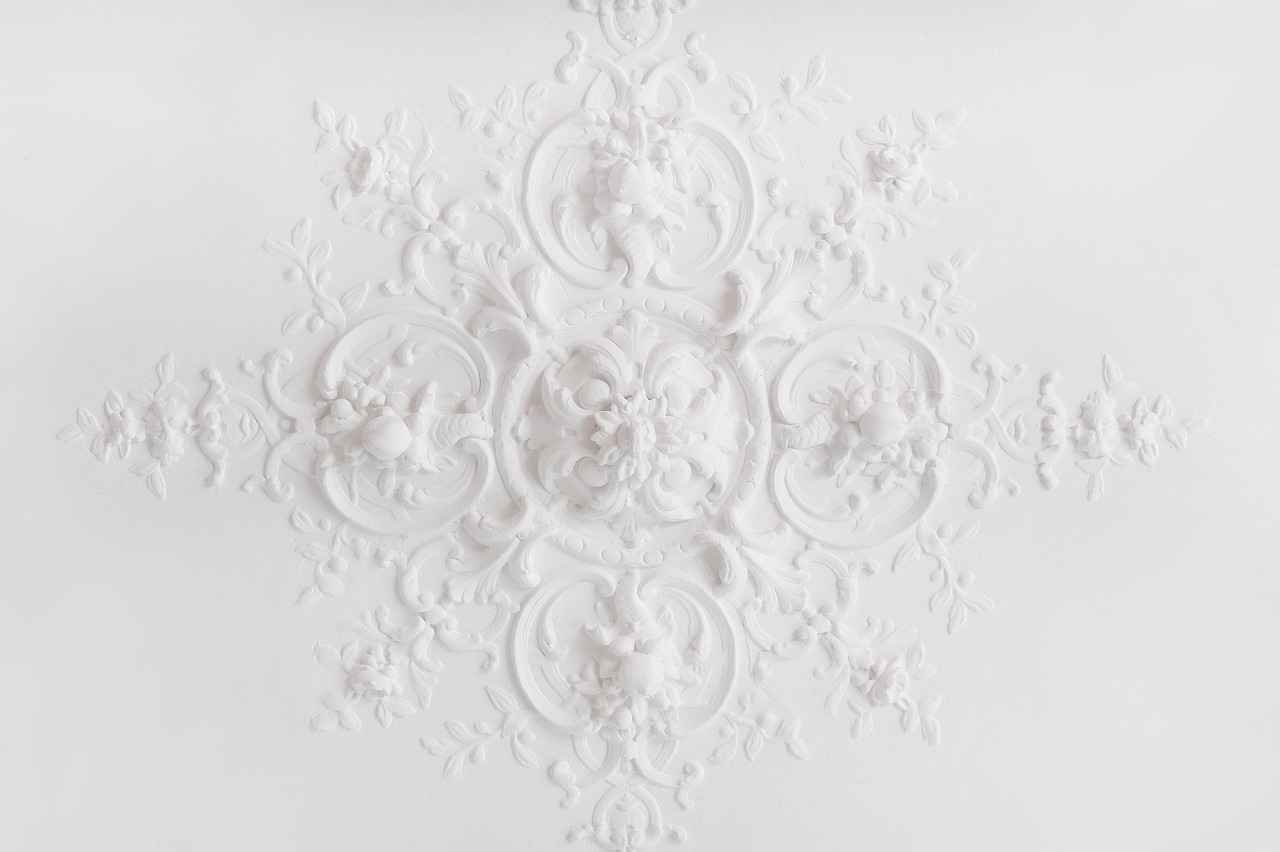
Why Choose a Ceiling-Mounted Room Divider?
When considering ways to enhance the functionality of your living space, ceiling-mounted room dividers emerge as a popular choice. These dividers not only serve as practical solutions for creating distinct areas within a room but also offer a multitude of benefits that can significantly improve your overall environment.
One of the primary advantages of opting for a ceiling-mounted room divider is the flexibility it provides in space management. Whether you live in a compact apartment or a spacious home, these dividers allow you to easily create separate zones for various activities, such as work, relaxation, or entertaining guests. This versatility is particularly beneficial in open-concept layouts, where defining spaces can enhance both privacy and functionality.
Another compelling reason to choose ceiling-mounted room dividers is the ease of installation. Unlike traditional room dividers that may require extensive construction work or permanent fixtures, ceiling-mounted options typically involve straightforward installation processes. Most homeowners can complete the setup with basic tools, making it a DIY-friendly project. This not only saves money on professional installation but also allows you to customize the divider according to your preferences.
Ceiling-mounted room dividers also offer the exciting opportunity to customize designs that seamlessly fit your decor and personal style. From fabric panels to wooden slats, the options are virtually limitless. You can select colors, patterns, and materials that resonate with your aesthetic, transforming a simple divider into a statement piece that enhances your interior design.
In addition to aesthetic benefits, these dividers can significantly enhance privacy within shared spaces. By creating barriers, they help reduce noise levels, making it easier to concentrate on work or enjoy quiet moments without disturbances. This is especially advantageous in homes with multiple occupants or in shared office environments.
Investing in a ceiling-mounted room divider is often a more cost-effective solution compared to extensive renovations or building permanent walls. They can be easily adjusted or removed as your needs change, providing a dynamic approach to space management that evolves with your lifestyle.
In summary, ceiling-mounted room dividers are an excellent choice for anyone looking to maximize their space’s potential. With their flexibility, ease of installation, and customizable designs, they cater to a wide range of needs and preferences. Whether you aim to enhance privacy, reduce noise, or simply create a more organized living environment, these dividers offer a practical and stylish solution that adapts to your lifestyle.

Essential Tools for Installation
When embarking on your ceiling-mounted room divider installation project, having the right tools is essential for achieving a professional finish. This section outlines the essential tools you will need, ensuring your project runs smoothly from start to finish.
Before you begin, gather the following tools:
- Drill: A reliable power drill is crucial for making holes in the ceiling and securing mounting hardware. Choose a drill with adjustable speed settings for better control.
- Level: This tool ensures that your divider is perfectly straight. An uneven installation can lead to operational issues and an unappealing appearance.
- Measuring Tape: Accurate measurements are vital. A measuring tape helps you determine the exact dimensions of your space, ensuring the divider fits perfectly.
- Stud Finder: This tool helps locate ceiling studs, which are essential for securely anchoring the mounting brackets. Properly anchoring to studs will provide the necessary support for your divider.
- Hammer: A hammer may be needed to gently tap in anchors or to adjust hardware during installation.
- Screwdriver: A screwdriver will assist in securing screws into the mounting brackets, ensuring a tight fit.
- Utility Knife: This tool is handy for trimming materials or cutting any excess fabric from your divider panels.
Each tool plays a crucial role in ensuring a successful setup:
- The drill allows you to create precise holes for mounting, which is essential for stability.
- A level guarantees that your divider hangs straight, which enhances the overall aesthetic of your space.
- Using a measuring tape helps prevent errors that could lead to an ill-fitting divider.
- A stud finder ensures that you are anchoring into solid structures, preventing potential accidents or damage.
To maximize the effectiveness of your tools, consider the following tips:
- Always read the manufacturer’s instructions for each tool to understand its proper use and safety precautions.
- Double-check your measurements before drilling or cutting to avoid costly mistakes.
- Keep your tools organized and within reach to streamline the installation process.
By gathering these essential tools and understanding their importance, you set the foundation for a successful installation of your ceiling-mounted room divider. With the right preparation and equipment, you can confidently transform your space while ensuring a clean and professional outcome.

Materials Needed for Your Project
Selecting the right materials is essential for ensuring both durability and aesthetics in your ceiling-mounted room divider project. The choice of materials can significantly impact the overall look and functionality of your divider, making it crucial to consider various options available.
When embarking on this project, there are several key materials to consider:
- Curtain Panels: The fabric you choose can define the ambiance of your space. Options range from sheer materials that allow light to filter through, to thicker fabrics that provide privacy and sound insulation. Consider color and pattern that complement your interior design.
- Mounting Hardware: This includes brackets, screws, and anchors necessary for securely attaching your divider to the ceiling. Selecting high-quality hardware is vital to ensure the stability and longevity of your installation.
- Tracks: The track system facilitates the smooth movement of your curtain panels. You can choose between single or double tracks, depending on whether you want to layer curtains or use a single panel.
Customization is key to achieving a unique look that fits your personal style. Many suppliers offer options for custom lengths and finishes. For instance, you can select a track color that matches your ceiling or choose decorative finials for the ends of your curtain rods.
It’s also important to consider the weight of the materials you select. Heavier fabrics may require sturdier mounting hardware and tracks to support their weight. Be sure to check the manufacturer’s specifications for weight limits to avoid any installation issues.
If sustainability is a priority for you, consider eco-friendly materials. Many companies now offer curtains made from organic cotton or recycled materials. Not only do these options help reduce your environmental footprint, but they can also add a unique touch to your decor.
Lastly, keep your budget in mind. While it may be tempting to opt for the most expensive materials, there are plenty of affordable alternatives that do not compromise on quality. Look for sales, discounts, or even second-hand options to find materials that fit your budget.
In summary, the materials you choose for your ceiling-mounted room divider can greatly influence both its functionality and aesthetic appeal. By considering the various options available and customizing them to fit your style, you can create a beautiful and practical space divider that meets your needs.

How to Measure Your Space Accurately?
Accurate measurements are essential for a successful installation of a ceiling-mounted room divider. Ensuring that your divider fits perfectly not only enhances the aesthetic appeal of your space but also guarantees its functionality. In this section, we will guide you through the process of measuring the height and width of your area, providing you with the confidence to proceed with your project.
When it comes to installing a room divider, precision is key. Inaccurate measurements can lead to various issues, such as:
- Misalignment of the divider
- Inadequate coverage of the intended area
- Increased installation time and costs
Taking the time to measure your space correctly will save you from these potential pitfalls.
Follow these straightforward steps to ensure accurate measurements:
- Gather Your Tools: Before you start measuring, gather a measuring tape, a notepad, and a pencil to record your measurements.
- Measure the Height: Start by measuring the height from the floor to the ceiling. Take note of any variations in height, especially if your ceiling is not perfectly level.
- Measure the Width: Next, measure the width of the area where the divider will be installed. Be sure to measure at multiple points to account for any irregularities in the wall.
- Account for Obstructions: Identify any obstructions such as light fixtures, vents, or windows that may affect the installation. Measure their distance from the wall to ensure the divider will not interfere with them.
- Double-Check Your Measurements: Always double-check your measurements before proceeding. It’s better to confirm than to find out later that something was miscalculated.
To enhance the accuracy of your measurements, consider the following tips:
- Use a Level: When measuring height, use a level to ensure your measuring tape is straight.
- Mark Your Measurements: Write down your measurements clearly, and consider marking them on the wall with a pencil for reference.
- Get a Second Opinion: If possible, have someone assist you in measuring. A second set of eyes can help catch any mistakes.
Once you have your measurements, you can move forward with selecting the right materials and planning the installation. Ensure that your chosen room divider can accommodate the dimensions you’ve recorded. If you’re purchasing a pre-made divider, check the specifications to confirm that it aligns with your measurements.
In conclusion, taking accurate measurements is a vital step in the installation process of a ceiling-mounted room divider. By following the outlined steps and tips, you can ensure that your divider fits perfectly, enhancing both the functionality and aesthetic of your space. Remember, measure twice, install once!

Preparing Your Ceiling for Installation
When it comes to installing a ceiling-mounted room divider, preparation is key. Properly preparing your ceiling not only ensures a secure installation but also enhances the overall functionality and aesthetics of your divider. This section will guide you through the essential steps to locate studs and determine the best mounting points for your divider.
Before you start your installation, it is crucial to understand why ceiling preparation is vital. A well-prepared ceiling provides the necessary support for your divider, preventing issues such as sagging or misalignment. Moreover, it ensures that the divider operates smoothly and lasts longer, which is essential for maintaining the beauty and functionality of your space.
To find the best mounting points for your room divider, you need to locate the ceiling studs. Here’s how you can do it:
- Use a Stud Finder: This tool is designed to detect wooden or metal studs behind the drywall. Move the stud finder along the ceiling until it beeps or lights up, indicating the presence of a stud.
- Manual Method: If you don’t have a stud finder, you can tap the ceiling lightly with a hammer. A solid sound indicates a stud, while a hollow sound suggests a gap.
- Measure from the Wall: Most studs are spaced either 16 or 24 inches apart. Measure from a corner or outlet to find the studs’ locations accurately.
Once you have located the studs, the next step is to determine the best mounting points for your divider. Consider the following:
- Weight Distribution: Ensure that the mounting points are spaced evenly to distribute the weight of the divider effectively.
- Height Considerations: Decide how high you want your divider to hang. Mark the desired height on the ceiling, ensuring it aligns with your overall design.
- Accessibility: Make sure that the mounting points are accessible for future adjustments or maintenance.
Before you drill any holes, it’s essential to check for any hidden electrical wiring or plumbing pipes in the ceiling. Use a stud finder that can also detect wires, or consult a professional if you’re uncertain. Avoiding these hazards is crucial for your safety and the integrity of your home.
After identifying the studs and ensuring there are no hidden hazards, the next step is to prepare the ceiling surface. Here are some tips:
- Clean the Area: Remove any dust or debris from the ceiling where the mounting hardware will be installed. This ensures a better grip for the screws.
- Repair Any Damage: If there are cracks or imperfections in the ceiling, repair them before installation. This will provide a smoother surface for mounting.
By following these steps, you will ensure that your ceiling is adequately prepared for the installation of your room divider. Taking the time to locate studs, determine the best mounting points, and check for any obstructions will lead to a more secure and aesthetically pleasing result.
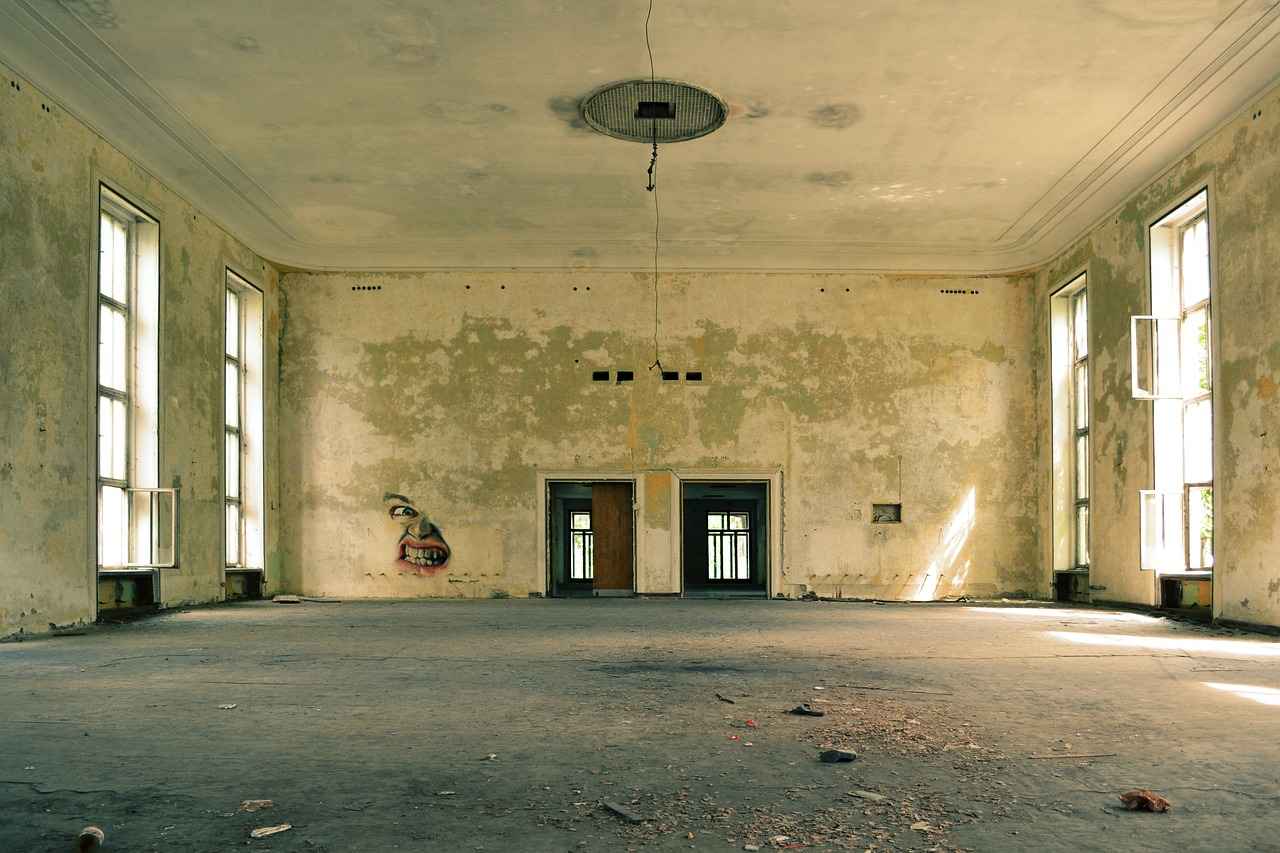
Step-by-Step Installation Process
Installing a ceiling-mounted room divider can transform your space, offering both functionality and style. This will guide you through each phase, ensuring that you can confidently complete the project with a professional finish. Below, you’ll find detailed instructions that will help you navigate through the installation effortlessly.
Before diving into the installation, it’s crucial to have all your materials and tools ready. Here’s a list of what you’ll need:
- Tools: Drill, level, measuring tape, stud finder, and a pencil.
- Materials: Curtain panels, mounting hardware, tracks, and possibly decorative elements.
Accurate measurements are essential for a successful installation. Start by measuring the height from the floor to the ceiling and the width of the area where you want to install the divider. Mark these measurements with a pencil on the ceiling to ensure precision.
Next, prepare your ceiling for installation. Use the stud finder to locate the ceiling joists, as these will provide the necessary support for your divider. Mark the positions of the studs with a pencil. This step is vital to ensure that the mounting hardware is securely anchored.
Now it’s time to install the mounting hardware. Follow these steps:
- Align the mounting brackets with the marks you made earlier.
- Using your drill, secure the brackets into the ceiling joists. Ensure they are level to avoid any misalignment.
- Double-check that the brackets are firmly attached before proceeding.
With the mounting hardware in place, you can now hang your divider panels. Here’s how:
- Attach the curtain tracks to the mounted brackets according to the manufacturer’s instructions.
- Carefully slide the curtain panels onto the tracks, ensuring they are evenly spaced.
- Adjust the panels to your desired position and make any necessary adjustments to ensure they hang straight.
Once the panels are hung, take a step back and assess the overall appearance. Make any final adjustments to ensure that the panels are aligned correctly. Test the functionality by sliding the panels back and forth to confirm they move smoothly.
Throughout the installation process, be mindful of common mistakes that can complicate your project. Ensure that:
- You have correctly located the studs before drilling.
- The mounting hardware is level to prevent misalignment.
- You allow enough space between the panels for easy movement.
By following these detailed instructions, you will successfully install your ceiling-mounted room divider, enhancing both the functionality and aesthetics of your space. Enjoy your newly defined areas!
Installing the Mounting Hardware
When it comes to installing a ceiling-mounted room divider, one of the most critical steps is the installation of the mounting hardware. This process requires precision and care to ensure that the divider remains stable and functions properly. Here’s a detailed guide on how to accomplish this effectively.
The mounting hardware is the backbone of your room divider system. If it is not installed correctly, you risk compromising the entire structure’s stability and functionality. A well-installed mounting system helps in:
- Ensuring Safety: Properly secured hardware minimizes the risk of accidents.
- Enhancing Aesthetics: An aligned and secure divider looks more professional and visually appealing.
- Improving Durability: Correct installation extends the life of your room divider.
Follow these steps to ensure a secure and aligned installation of your mounting hardware:
- Gather Your Tools: Before starting, ensure you have all necessary tools including a drill, level, measuring tape, and a stud finder.
- Measure Your Space: Accurate measurements are essential. Use the measuring tape to determine the correct height and width for your mounting points. Mark these points lightly with a pencil.
- Locate Ceiling Joists: Use the stud finder to locate the ceiling joists where you will attach the mounting hardware. This is important as the hardware needs to be anchored to a solid structure.
- Drill Pilot Holes: Once you have located the joists, drill pilot holes at the marked points. This helps to guide the screws and prevents the wood from splitting.
- Install the Mounting Brackets: Align the brackets with the pilot holes and secure them using screws. Ensure that they are level and tightly fastened.
- Check Alignment: After installing the brackets, use the level to check that everything is straight. Adjust as necessary before proceeding.
To further enhance your installation process, consider the following tips:
- Double-Check Measurements: Always verify your measurements before making any cuts or drilling holes.
- Use Quality Materials: Invest in high-quality mounting hardware to ensure durability and stability.
- Seek Help if Needed: Don’t hesitate to ask for assistance, especially when handling large panels or heavy materials.
Being aware of common pitfalls can save you time and frustration:
- Neglecting to Locate Joists: Failing to anchor the hardware to a joist can lead to a collapse.
- Incorrect Measurements: Inaccurate measurements can result in a poorly fitting divider.
- Skipping the Level Check: Not checking for level can lead to an uneven installation.
By following these guidelines, you can ensure that your mounting hardware is installed correctly, providing a stable and secure foundation for your ceiling-mounted room divider. This attention to detail will enhance both the functionality and appearance of your space.
Hanging the Divider Panels
is a crucial step in the installation of a ceiling-mounted room divider. Proper techniques for hanging your divider panels not only enhance the overall aesthetic of your space but also ensure functionality and durability. Here, we will explore the best practices for achieving a professional look through effective spacing and alignment.
When hanging divider panels, spacing plays a significant role in the visual appeal and practical use of the divider. Adequate spacing allows for easy movement and access while maintaining privacy. Consider the following tips:
- Measure Twice, Hang Once: Before installation, measure the distance between panels to ensure even spacing. A common recommendation is to leave a gap of 2-3 inches between panels for a seamless look.
- Consider Ceiling Height: The height of your ceiling can influence the spacing. For taller ceilings, you may want to increase the spacing slightly to create a more balanced appearance.
Alignment is essential for a polished finish. Here are some techniques to help you align your divider panels effectively:
- Use a Level: A level is your best friend when it comes to ensuring that your panels hang straight. Always check the alignment before securing the panels in place.
- Mark Your Points: Use a pencil to mark where each panel will hang. This helps to visualize the layout and makes adjustments easier if necessary.
The choice of mounting hardware can also impact the effectiveness of your installation. Ensure that the hardware is robust enough to support the weight of the divider panels. Here are some considerations:
- Weight Capacity: Check the weight limits of your chosen hardware to avoid sagging or failure.
- Type of Track: Select a track system that allows for smooth movement and is compatible with your divider panels.
To achieve a truly professional look, consider the following additional tips:
- Use Fabric Panels: If your divider panels are made of fabric, ensure they are properly hemmed and weighted at the bottom to prevent them from swaying.
- Incorporate Decorative Elements: Adding decorative touches such as trim or a contrasting color can elevate the overall design of your divider.
In conclusion, hanging divider panels requires careful attention to spacing and alignment. By following these expert tips, you can create a visually appealing and functional room divider that enhances your space. Remember, the key to a successful installation lies in meticulous planning and execution.

Common Mistakes to Avoid
When embarking on a DIY project like installing a ceiling-mounted room divider, it’s crucial to be aware of potential pitfalls that can lead to unnecessary complications. Identifying common mistakes can save you time and frustration, ensuring a smoother installation process. This section highlights frequent errors encountered during installation and offers practical tips on how to prevent them.
One of the most common mistakes is failing to take accurate measurements. Before you begin, ensure you measure the height and width of your space correctly. Double-check your measurements to avoid cutting materials too short or too long. A simple miscalculation can lead to significant setbacks.
Another frequent error is neglecting to locate ceiling studs. Properly anchoring the mounting hardware to the studs is essential for the stability of the divider. Use a stud finder to identify the best mounting points, and mark them clearly before installation.
Installing the divider without ensuring it is level can result in an uneven appearance. Always use a level to check that your mounting hardware is straight. This step is vital for achieving a professional look and ensuring the functionality of the divider.
Choosing the wrong materials can compromise the durability and aesthetics of your room divider. Make sure to select materials that are suitable for your specific needs and environment. For example, lightweight materials may not hold up well in high-traffic areas.
Patience is key when installing a ceiling-mounted room divider. Rushing through the installation can lead to mistakes that may require you to redo the work. Take your time to follow each step carefully, ensuring everything is done correctly.
Safety should always be a priority. Ensure that you are using tools correctly and wearing appropriate safety gear. Neglecting safety precautions can lead to accidents and injuries, which can derail your project entirely.
Many DIYers overlook the importance of planning for future maintenance. Consider how easy it will be to clean and maintain the materials you choose. Regular upkeep is essential for keeping your room divider looking great and functioning well.
Finally, don’t hesitate to ask for help if you encounter difficulties. Whether it’s consulting a friend with experience or seeking professional advice, getting assistance can prevent mistakes that lead to costly repairs.
By being aware of these common mistakes and taking proactive steps to avoid them, you can ensure a successful installation of your ceiling-mounted room divider. This not only enhances your space but also provides a sense of accomplishment in completing a DIY project.
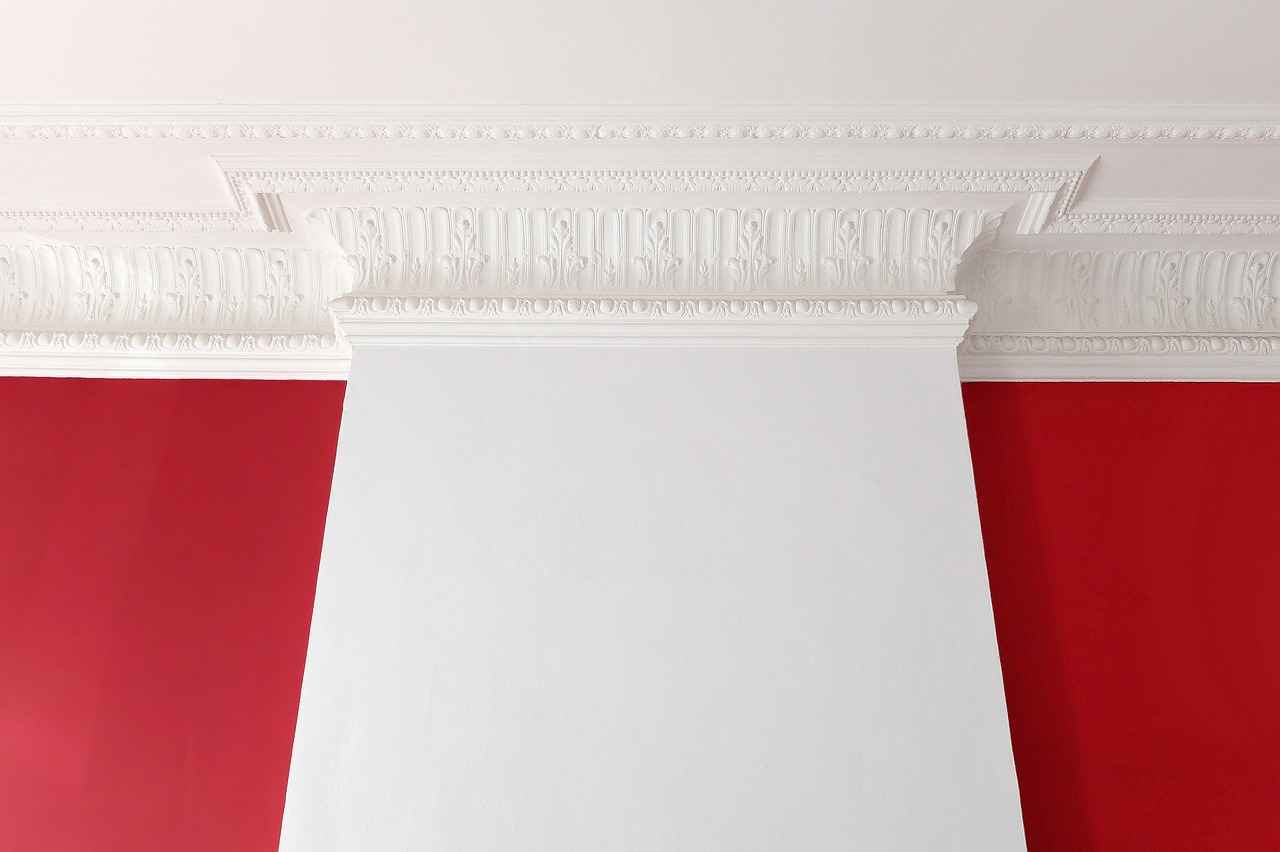
Maintaining Your Ceiling-Mounted Room Divider
Maintaining your ceiling-mounted room divider is essential for ensuring its longevity and functionality. Regular upkeep not only keeps it looking great but also enhances its performance. Here, we will explore effective ways to care for your divider, including cleaning tips and inspection routines.
Regular maintenance is vital for several reasons:
- Longevity: Consistent care helps prevent wear and tear, extending the life of your divider.
- Functionality: A well-maintained divider operates smoothly, ensuring ease of use.
- Aesthetic Appeal: Keeping your divider clean and in good shape enhances the overall look of your space.
Cleaning your ceiling-mounted room divider is straightforward. Here are some effective cleaning tips:
- Dust Regularly: Use a soft cloth or microfiber duster to remove dust from the panels and tracks.
- Spot Clean Stains: For fabric dividers, use a mild detergent mixed with water to gently spot clean any stains. Always test on a small, inconspicuous area first.
- Wash Fabric Panels: If your divider has removable fabric panels, follow the care instructions for washing. Most can be machine washed on a gentle cycle.
- Wipe Down Hardware: Use a damp cloth to clean the mounting hardware and tracks, ensuring they are free of debris.
Performing regular inspections can help you catch potential issues early. Here’s what to check:
- Alignment: Ensure that the divider is hanging straight and properly aligned.
- Hardware Condition: Check for any loose screws or damaged mounting hardware. Tighten or replace as necessary.
- Track Functionality: Test the sliding mechanism to ensure it moves smoothly without obstruction.
Establishing a maintenance schedule is beneficial. Here are some recommendations:
- Weekly: Dust the divider and perform a quick visual inspection.
- Monthly: Conduct a more thorough cleaning and check the hardware.
- Seasonally: Inspect for any wear and tear, and perform any necessary repairs.
Being aware of common issues can help you address them promptly:
- Sticking Panels: If the panels stick, check for obstructions in the track and clean it thoroughly.
- Fading Colors: To prevent fading, avoid direct sunlight on fabric panels. Consider using UV-protective treatments.
- Loose Hardware: Tighten any loose screws immediately to avoid further damage.
By following these maintenance tips, you can ensure that your ceiling-mounted room divider remains a beautiful and functional element of your space for years to come. Regular care not only enhances its appearance but also promotes a pleasant and organized environment.
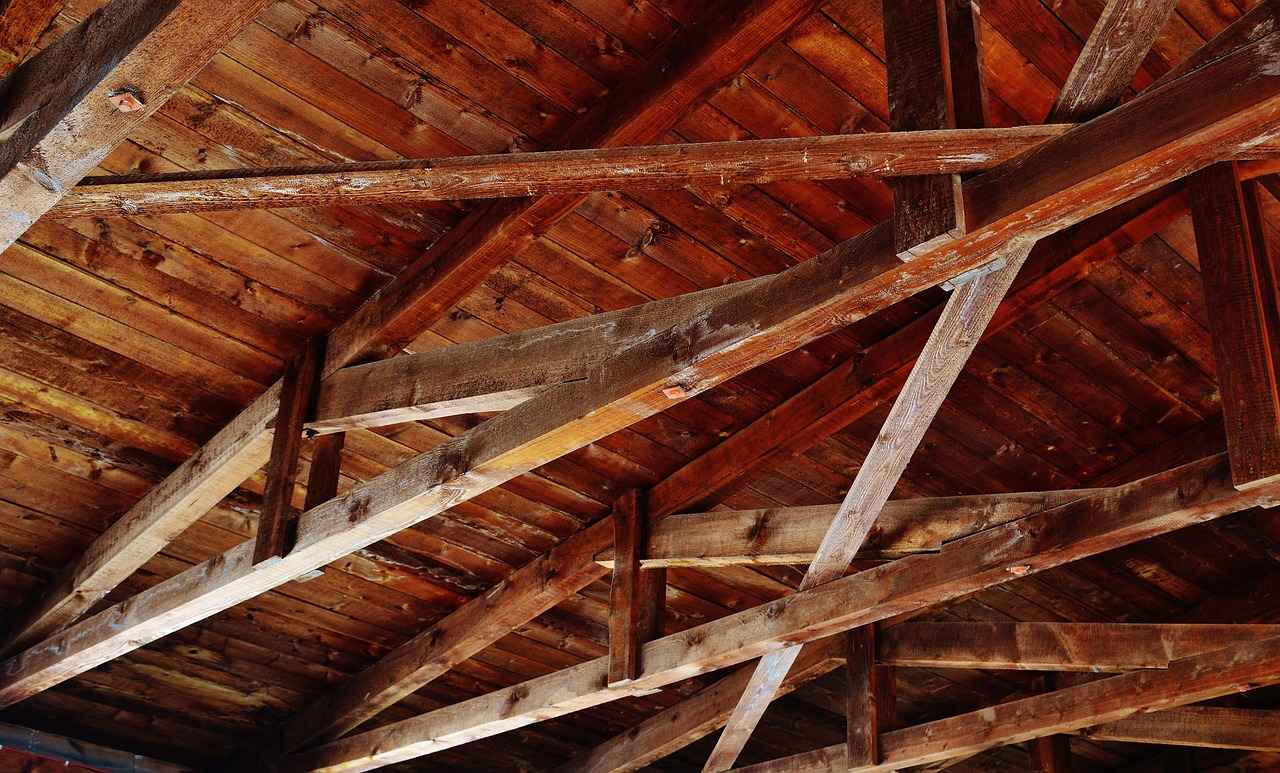
Creative Ideas for Room Divider Designs
When it comes to designing your living space, room dividers can play a pivotal role in enhancing both functionality and aesthetics. A ceiling-mounted room divider not only creates distinct areas within a room but also offers a canvas for your creativity. Below are some innovative design ideas to inspire your project.
Choosing the right materials is crucial for both durability and style. Here are some popular options:
- Fabric Panels: Soft fabrics can add warmth and texture. Consider using materials like linen, cotton, or even sheer fabrics for a light, airy feel.
- Wooden Slats: For a rustic or modern look, wooden slats can create a stunning visual effect while providing some degree of privacy.
- Glass or Acrylic: These materials can make a space feel larger and more open while still serving as a divider.
The color scheme of your room divider can significantly influence the overall atmosphere of your space. Here are some tips:
- Neutral Tones: Shades like beige, gray, or white can blend seamlessly with various decor styles.
- Bold Colors: If you want to make a statement, consider vibrant colors like teal or mustard yellow to create a focal point.
- Patterns: Incorporating patterns, such as stripes or floral designs, can add visual interest and personality.
There are various styles to consider when designing your ceiling-mounted room divider:
- Modern Minimalist: Focus on clean lines and simple materials for a sleek appearance.
- Bohemian Chic: Layer fabrics with different textures and patterns for an eclectic look.
- Industrial: Use metal frames and reclaimed wood for a raw, urban aesthetic.
Lighting can dramatically change the ambiance of your space. Here are a few ideas:
- Backlit Panels: Install LED lights behind your divider to create a soft glow.
- Hanging Fixtures: Consider pendant lights or chandeliers that can be suspended from the ceiling-mounted track.
- Integrated Lighting: Use fabric panels that allow light to filter through for a warm and inviting atmosphere.
Incorporating functional elements into your room divider can enhance its utility:
- Storage Solutions: Use shelves or cabinets integrated into the divider for additional storage.
- Plants: Hanging planters or integrated green walls can bring nature indoors and improve air quality.
- Artwork: Display art pieces or photographs on your divider to personalize the space.
With these creative ideas, you can transform a simple ceiling-mounted room divider into a stunning feature that reflects your personal style while enhancing your living space. Remember, the key is to choose materials and designs that resonate with you and suit the overall aesthetic of your home.
Frequently Asked Questions
- What tools do I need to install a ceiling-mounted room divider?
To kick off your installation, you’ll need a few essential tools: a drill, level, measuring tape, and a stud finder. These tools are your best friends in ensuring a smooth and successful setup!
- Can I customize the design of my room divider?
Absolutely! One of the best parts about ceiling-mounted room dividers is their flexibility. You can choose from various materials, colors, and styles to match your decor and personal taste.
- How do I measure my space for the divider?
Measuring your space accurately is crucial. Start by measuring the height and width where you plan to install the divider. This ensures it fits perfectly and functions as intended!
- What are common mistakes to avoid during installation?
Some frequent pitfalls include not checking for studs, misaligning the mounting hardware, and forgetting to measure twice. Avoiding these can save you a lot of headaches!
- How do I maintain my ceiling-mounted room divider?
Regular maintenance is key! Keep it clean and inspect it periodically for any wear and tear. This will help ensure it remains functional and looking great for years to come.












